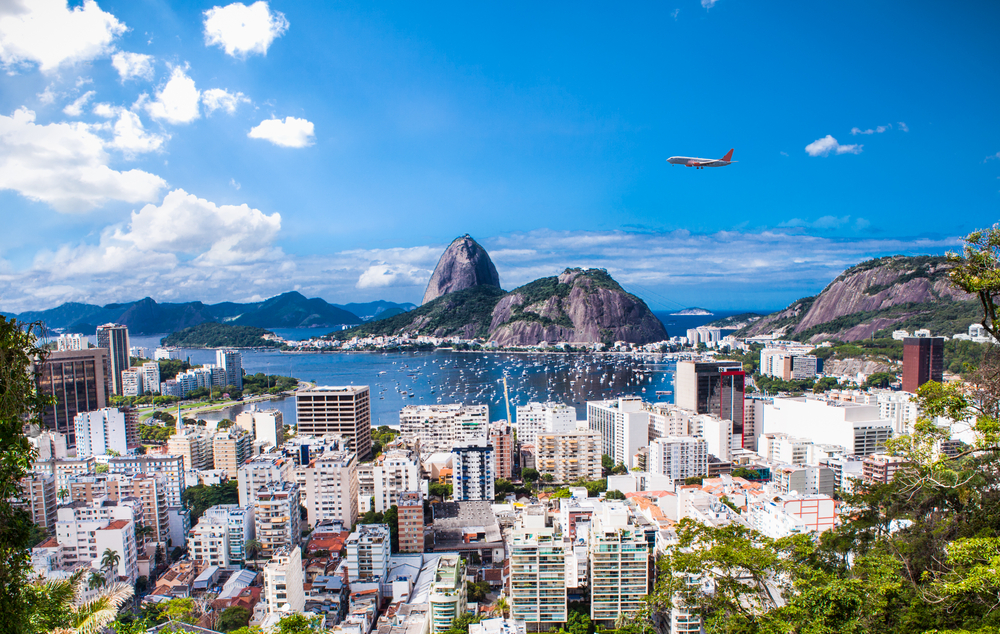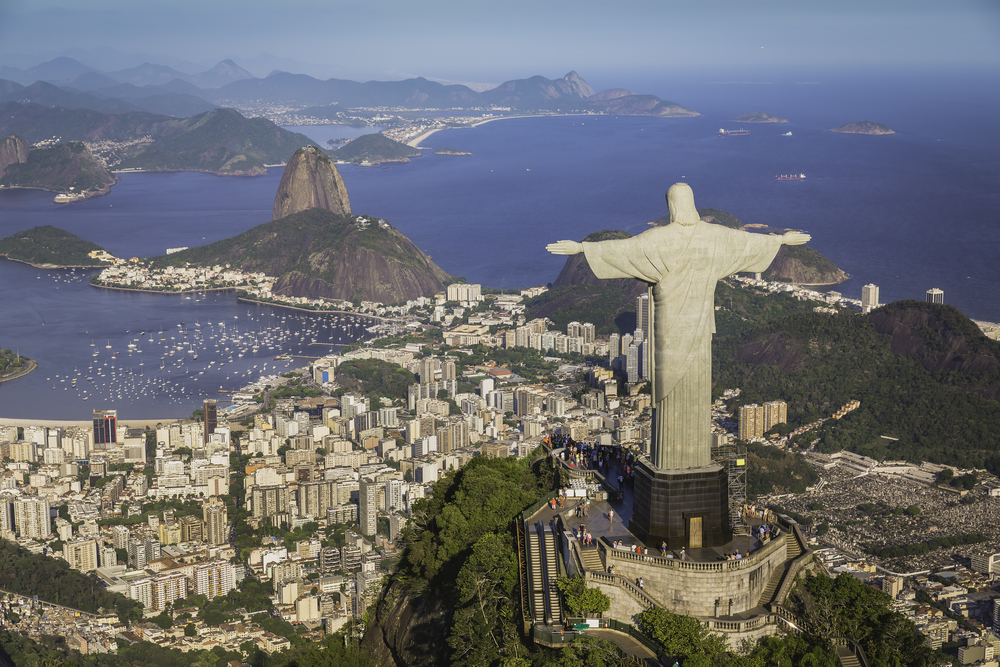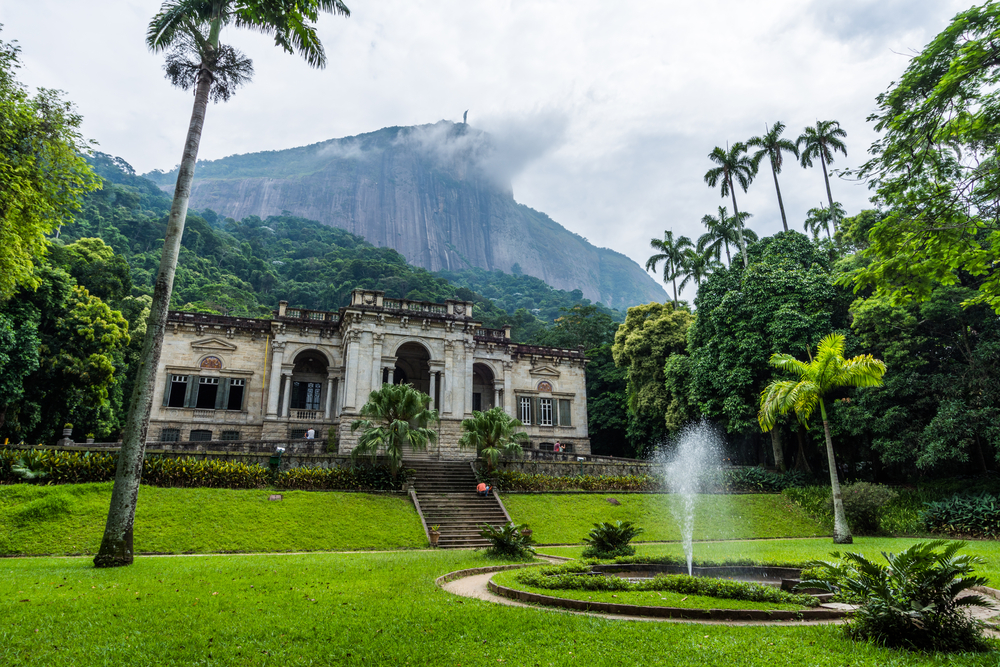Rio de Janeiro is a dream destination for adventurous cruise ship passengers embarking on a voyage around the coast of South America. The city is renowned for its staue of Christ the Redeemer which has been named as one of the New 7 Wonders of the World. It is also home to Sugarloaf Mountain which is a UNESCO World Heritage Site and the world famous beaches of Copacabana and Ipanema. All these attractions can be reached on short excursions from the cruise port at Pier Mauá which lies within walking distance of Rio’s city centre.
Whilst passengers will be well aware that Rio de Janeiro isn’t the safest of cities there’s no need for its reputation to spoil a visit to the city. Just book an excursion with your cruise line or a private tour with a local agency and you’re unlikely to run into any trouble. Independent travellers need to exercise a little more caution than they might in other ports of call but simple common sense in terms of not carrying valuables and not leaving belongings unattended will go a long way to ensuring an incident-free visit to this exciting destination.
Rio de Janeiro Airport
Cruise ship passengers who are beginning or ending their journey in Rio de Janeiro will most likely be arriving or departing through Galeão International Airport which lies 16km north-west of the port by road. The airport welcomes flights from all over South America as well as direct services from North America and Europe.
Bus transfers to or from the airport aren’t recommended for cruise passengers so taxi and Uber transfers are the most popular transfer options. Unfortunately, taxi drivers in Rio are well-known for overcharging unsuspecting tourists. For that reason you are strongly advised to pre-book airport transfers to and from Rio de Janeiro Airport. Journeys are paid for online in advance and you can rest assured that a professional, local driver will safely transfer you to or from your ship at a pre-arranged time.
Getting Around in Rio de Janeiro
From the cruise port, passengers can walk into the downtown district which is home to a number of historic buildings. Alternatively, you can jump onto the Rio de Janeiro Light Rail system (VLT Carioca) at Parada dos Museus to get to destinations in the city centre. Taxis are easily available for trips to the main city sights and beaches although they are notorious for ripping-off tourists. A popular option is to download a taxi app such Uber or EasyTaxi and have the peace of mind that your journey is being monitored and the price is confirmed in advance.
As well as the tram and taxi options listed above you can also travel around Rio de Janeiro by means of its excellent Metro system which has three lines serving stations close to all the main tourist attractions. The nearest Metro station to the port is Uruguaiana which can be reached on foot or by tram. City buses are another transport option although they are not considered to be as safe as the other means of transport and should certainly be avoided after dark. For many visitors it’s well worth booking tours with your cruise line or a local agency so as to make the most of your limited time in port.
Port of Rio de Janeiro
Rio de Janeiro welcomes cruise ships to its port at Pier Mauá which lies less than 2km from the downtown (Centro) area. The whole area of the city surrounding the docks was transformed in the build up to the 2016 Olympic Games resulting in what is now a popular tourist destination known as ‘Porto Maravilha’. The old, industrial warehouses have been repurposed as trendy office spaces and numerous cultural attractions including the Santiago Calatrava-inspired Museu do Amanhã (Museum of Tomorrow) and the Rio Museum of Arts have been established there.
In spite of the these local attractions, most cruise ship passengers are keen to head off to see the famous sights of Rio such as the statue of Christ the Redeemer and Sugarloaf Mountain. Others choose to head for the city’s famous beaches such as Copacabana and Ipanema which lie 10-12km south of the port.
Main Tourist Attractions
Visitors who prefer to explore their ports of call independently rather than as part of group excursions will find Rio to be a fairly user-friendly city. Most of the main attractions lie in the South Zone (Zona Sul) which can be reached from Pier Mauá by public transport. Just remain extra vigilant when travelling around as cruise ship passengers can appear as easy targets for petty thieves who make their living from pickpocketing and bag-snatching on public transport and near tourist attractions.
If you do decide to go it alone, these are the main sights that you’ll want to visit:
Christ the Redeemer: Rio de Janeiro’s iconic statue stands on Cerro del Corcovado mountain some 15km south of the cruise port. Bus and Metro services can be used to get there but taking a shared taxi or Uber with some fellow passengers is the preferred means of transport. You can choose to drive to the top of the mountain through the beautiful Tijuca Forest or get dropped off at Praça do Lido from where minibuses run up the statue. Alternatively, you can take a taxi to the Corcovado Train Station in the Cosme Velho neighbourhood and travel up to Christ the Redeemer on the historic Corcovalo Rack Railway.
Sugarloaf Mountain: Located some 13km south of the port on a peninsula overlooking the Atlantic Ocean, this attraction is again best reached by means of a 20 minute taxi/Uber ride. Getting there by public transport would generally take more than an hour. Visitors can travel to the top of the mountain by means of frequent cable cars which operate from Praia Vermelha via Morro da Urca.
Copacabana Beach: To reach this world-famous beach you can take a metro from Uruguaiana (less than 2km from the port) to Siqueira Campos in Copacabana. There’s also a direct bus from nearby Avenida Venezuela but once again a shared taxi will probably prove to be the most convenient option. This beach area along with neighbouring Ipanema is a great place to spend a few hours and is a good choice for a lunch break thanks to the many bars and restaurants which line the beach’s 4km long promenade. Just be particularly careful with your personal belongings here which you should never leave unattended.
Other Attractions: Beyond these three iconic sights you might want to make your way into the city centre (Centro) which is home to a number of historic sights and visit the bohemian district of Santa Teresa. The botanical gardens which lie on the edge of the Tijuca rainforest are also highly recommended. A few attractions including the Maracanã soccer stadium lie in the Zona Norte which is home to some of the city’s shanty towns (favelas). Independent travel into this neighbourhood can be very dangerous and should be avoided by cruise ship passengers.
Shore Excursions and Private Tours
Most first time visitors to Rio de Janeiro would be advised to book a shore excursion which takes in the city’s main sights and guarantees a higher degree of security than independent sightseeing. Private tours are also recommended as they provide a more personalised service than the group excursions and allow for visits beyond the main attractions. These might include the Tijuca Forest which is one of the world’s largest urban forests, the Maracanã football stadium which hosted the 2014 World Cup final and the main sights of the city centre such as the Metropolitan Cathedral and the iconic Selarón Steps.
About Shuttle Direct
Shuttle Direct is one of the world’s most established and respected airport transfer providers. Our services are available throughout Europe as well as in North Africa, the Middle East, Southeast Asia and South America. Our friendly local drivers will ensure your safe, economical and convenient passage to and from the airport, cruise terminal or major train station of your choice with a minimum of fuss. Book your transfer with our easy to use online booking system and leave the rest up to us!









